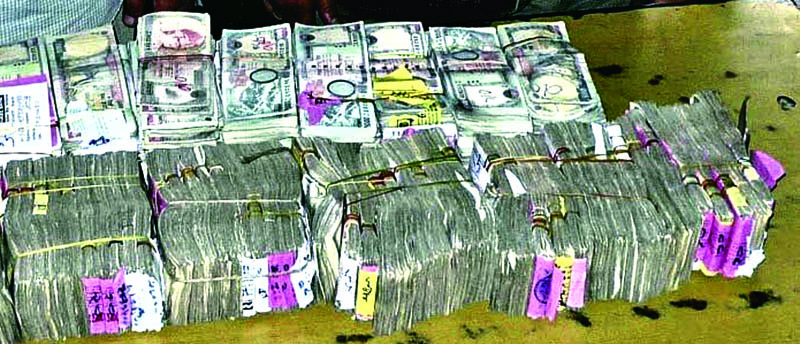Nepal has Rs 965.81 billion at disposal
- Country’s gross national savings of 42.95pc of the GDP is one of the highest in the world
Kathmandu, May 4
Who says Nepal lacks financial resources and cannot fund development activities on its own?
Figures released yesterday by the Central Bureau of Statistics (CBS) show that Nepal’s gross national savings stands at 42.95 per cent of the gross domestic product (GDP), which is one of the highest in the world.
This means the country has a whopping Rs 965.81 billion at its disposal, if GDP of Rs 2,248.69 billion of this fiscal year is taken into account.
If this money is used properly, it would be enough to build hydro projects with installed capacity of around 5,681 megawatts, considering per megawatt project development cost of Rs 170 million.
The money would also be enough to build 38,632 km of two-lane road in the Tarai, considering per km construction cost of Rs 25 million, and at least 12,072 km of two-lane road in the hilly region, considering per km construction cost of up to Rs 80 million.
If not, the same money could be used to build other physical infrastructure, lack of which has forced Nepal to grapple with a long spell of subpar economic growth.
This makes it clear that the country does not only have adequate financial resources but ample areas where the fund could be invested.
“So, what we need now is an intermediary that could work as a bridge between the two. This is where the government policies should play a role and remove the bottlenecks, so that an enabling environment could be created,” Swarnim Wagle, senior economist and former member of the National Planning Commission told The Himalayan Times.
Nepal’s gross national savings has stood at a high level of over 40 per cent of the GDP for the last four years. This is encouraging.
But what is surprising is that domestic savings has played a very small role in giving impetus to national savings. This is unlike in many countries where national savings rate is high.
In this fiscal year, for instance, Nepal’s gross domestic savings is likely to hit a rock bottom of 5.26 per cent of the GDP, which is the lowest in at least two decades. It was hovering around nine per cent in the last fiscal.
Domestic savings took a hit this fiscal because Nepal’s production capacity did not go up in a significant manner. This was reflected by official GDP growth projection of mere 0.77 per cent for this fiscal. As a result, almost 95 per cent of goods and services produced in the country this fiscal are likely to be consumed.
“This is an indication that Nepal is gradually becoming a consumers’ society and not producers’,” Wagle said.
Although higher consumption may not always be bad for the economy, the problem in Nepal is that most of the goods that are consumed are imported. This means most of the money spent on consumption of goods is flowing out of the country.
If you are wondering where this money to purchase imported goods is coming from — especially at a time when GDP growth has remained very low — the answer
is workers’ remittance. And this remittance income has also played a key role in keeping national savings rate at a higher level.
Nepalis working abroad sent home Rs 427.37 billion in the first eight months of the current fiscal. This inflow was 15.2 per cent higher than in the same period of last fiscal year.
Considering this growth rate, workers’ remittance as percentage of the GDP is expected to rise to 32.09 per cent in the current fiscal year, from 29.11 per cent recorded in the last fiscal.
“So, the government is basically living off remittances and taxes levied on derivatives of remittances,” said Wagle.
On top of remittances, Nepal also received Rs 45.42 billion in grants from overseas in the first eight months of the current fiscal, up 92.6 per cent, and Nepalis, who had previously worked abroad, collected Rs 29.63 billion in pension in the eight-month period — up 7.9 per cent than in the same period of the last fiscal.
These inflows gave a boost to the national savings rate.
“But reliance on net transfers, such as remittance and grants (which come from abroad), may not always help us. So, Nepal needs to enhance its own capacity to give a lift to national savings,” said Wagle, adding, “In this regard, we should promote culture of household savings, make the capital market more sophisticated and deepen access to finance.”






